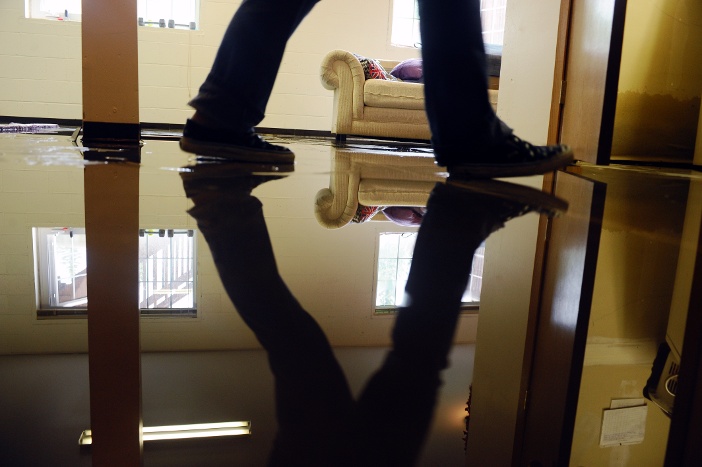Do you find yourself on the lookout for insight about Flushing Food Down the Toilet??

Intro
Lots of people are commonly confronted with the problem of what to do with food waste, specifically when it pertains to leftovers or scraps. One typical concern that occurs is whether it's fine to flush food down the commode. In this post, we'll delve into the reasons that people might consider flushing food, the consequences of doing so, and alternative approaches for appropriate disposal.
Reasons why people could take into consideration purging food
Lack of understanding
Some individuals might not understand the prospective damage triggered by purging food down the bathroom. They might erroneously think that it's a safe technique.
Benefit
Purging food down the toilet may seem like a fast and easy option to taking care of undesirable scraps, specifically when there's no close-by garbage can available.
Idleness
In many cases, individuals might merely pick to flush food out of sheer negligence, without considering the repercussions of their actions.
Consequences of flushing food down the toilet
Environmental influence
Food waste that winds up in rivers can contribute to pollution and damage aquatic ecological communities. Additionally, the water used to flush food can strain water resources.
Pipes issues
Flushing food can bring about clogged up pipelines and drains, causing expensive pipes repairs and inconveniences.
Types of food that need to not be purged
Coarse foods
Foods with coarse structures such as celery or corn husks can obtain tangled in pipelines and trigger blockages.
Starchy foods
Starchy foods like pasta and rice can absorb water and swell, causing obstructions in pipes.
Oils and fats
Greasy foods like bacon or cooking oils ought to never be flushed down the commode as they can strengthen and cause blockages.
Proper disposal techniques for food waste
Using a waste disposal unit
For homes furnished with garbage disposals, food scraps can be ground up and flushed via the pipes system. Nevertheless, not all foods appropriate for disposal in this way.
Recycling
Certain food product packaging materials can be recycled, lowering waste and decreasing ecological influence.
Composting
Composting is an environment-friendly means to get rid of food waste. Organic materials can be composted and utilized to enhance dirt for gardening.
The relevance of appropriate waste management
Reducing ecological injury
Appropriate waste monitoring techniques, such as composting and recycling, aid reduce pollution and protect natural resources for future generations.
Shielding pipes systems
By preventing the method of flushing food down the bathroom, property owners can prevent expensive pipes fixings and maintain the honesty of their plumbing systems.
Final thought
Finally, while it may be tempting to flush food down the bathroom for convenience, it's important to recognize the prospective consequences of this action. By taking on correct waste administration practices and disposing of food waste responsibly, people can contribute to healthier pipes systems and a cleaner atmosphere for all.
THINK TWICE BEFORE FLUSHING FOOD DOWN YOUR TOILET IN FALLBROOK CA
Let’s be honest, we’re really supposed to be tossing rotten or leftover food in the compost bin or trash can. But many people like to place scraps of food down the drain of, say, their kitchen sink. That’s why the garbage disposal was invented: so we can continue to place certain foods down the drain without clogging our drain in the process. Smart.
But not all of us have the luxury of having a garbage disposal installed. So, you might continue to shove food down your sink drain anyway – or worse: you might flush them down your toilet! If you’re guilty of doing the latter, you’re going to want to stop, and here’s why:
Toilet Drains Aren’t Designed to Handle Food!
There’s your answer: food just doesn’t belong in your toilet. It may seem like your toilet drain is wider than the drains of your sinks, but truth be told, that isn’t actually the case. The narrower pipes of your toilet leave your plumbing at risk for clogging if you do happen to flush your food. In addition, food doesn’t break down as quickly that toilet paper and human waste do. In turn, this leaves your toilet at risk for a nasty clog.
Although a flush of a tiny pinch of food every now and then isn’t going to completely damage your toilet, there are certain foods that should absolutely not be flushed in your toilet at all. These include starchy foods like mashed potatoes, grains, hard pieces of food that are slow to break down, and fats and oils.
The latter categories of food are particularly problematic as they may harden, expand as they absorb water, break down slowly in your system, or generally create the perfect obstruction with their gelatinous composition. These are all things you don’t want in your plumbing system!
Experiencing a Toilet Clog?
Nobody’s perfect, and we all make mistakes. Sometimes one of the mistakes people make is flushing food down their toilet and later realizing that it wasn’t the best thing to do once they see that their toilet is now clogged. Uh-oh!

I found that entry on Is it safe to flush food (especially rice) down the toilet? while browsing on the search engines. Loved our piece of writing? Please quickly share it. Let other people discover it. I value your readership.
Get Quote

